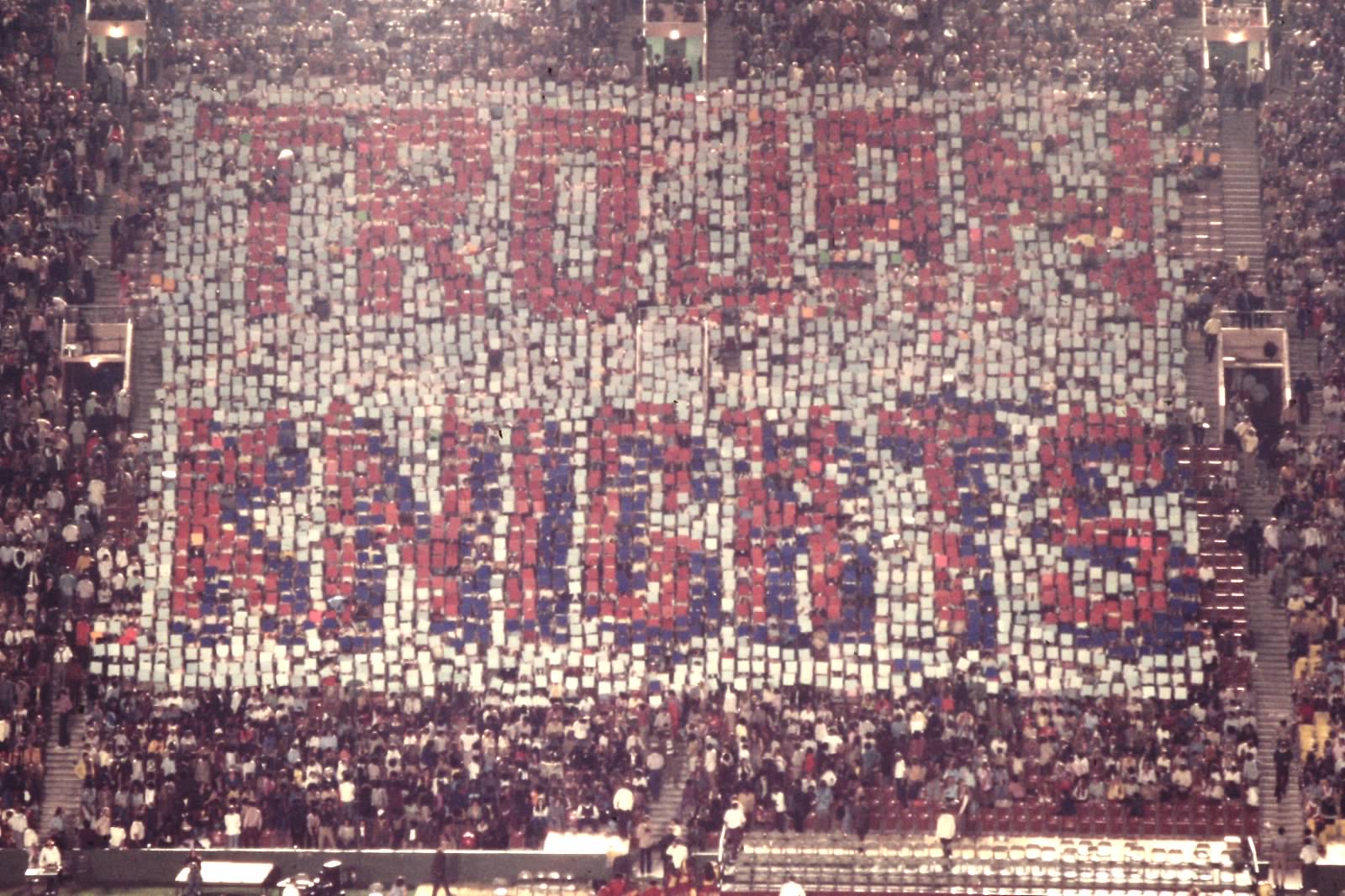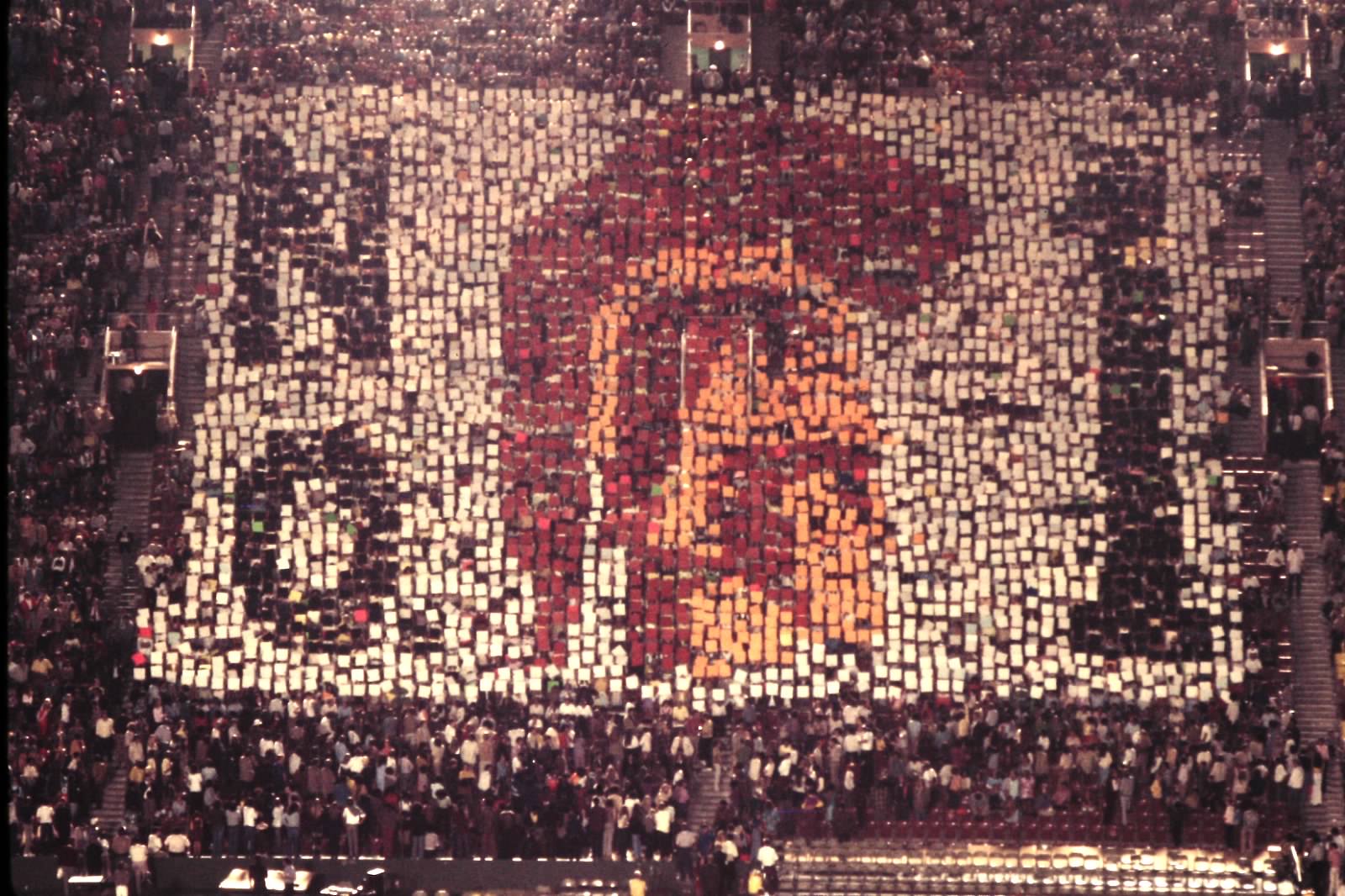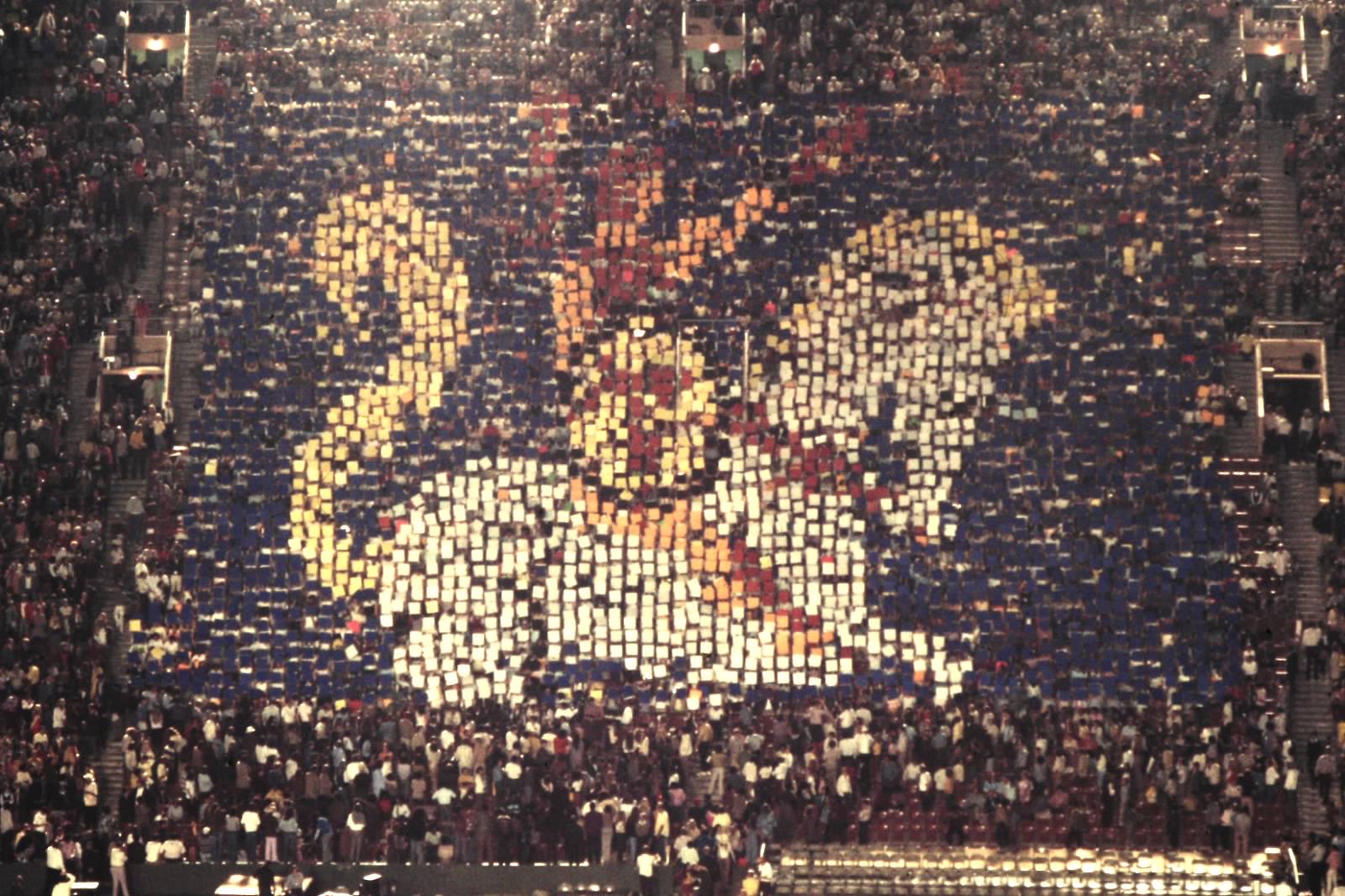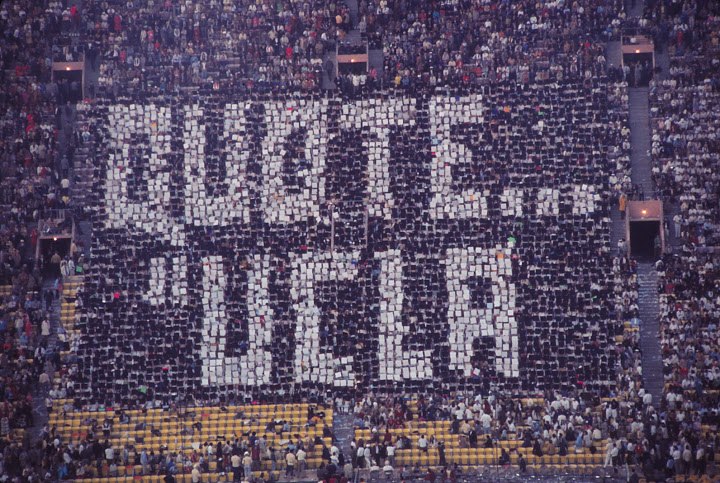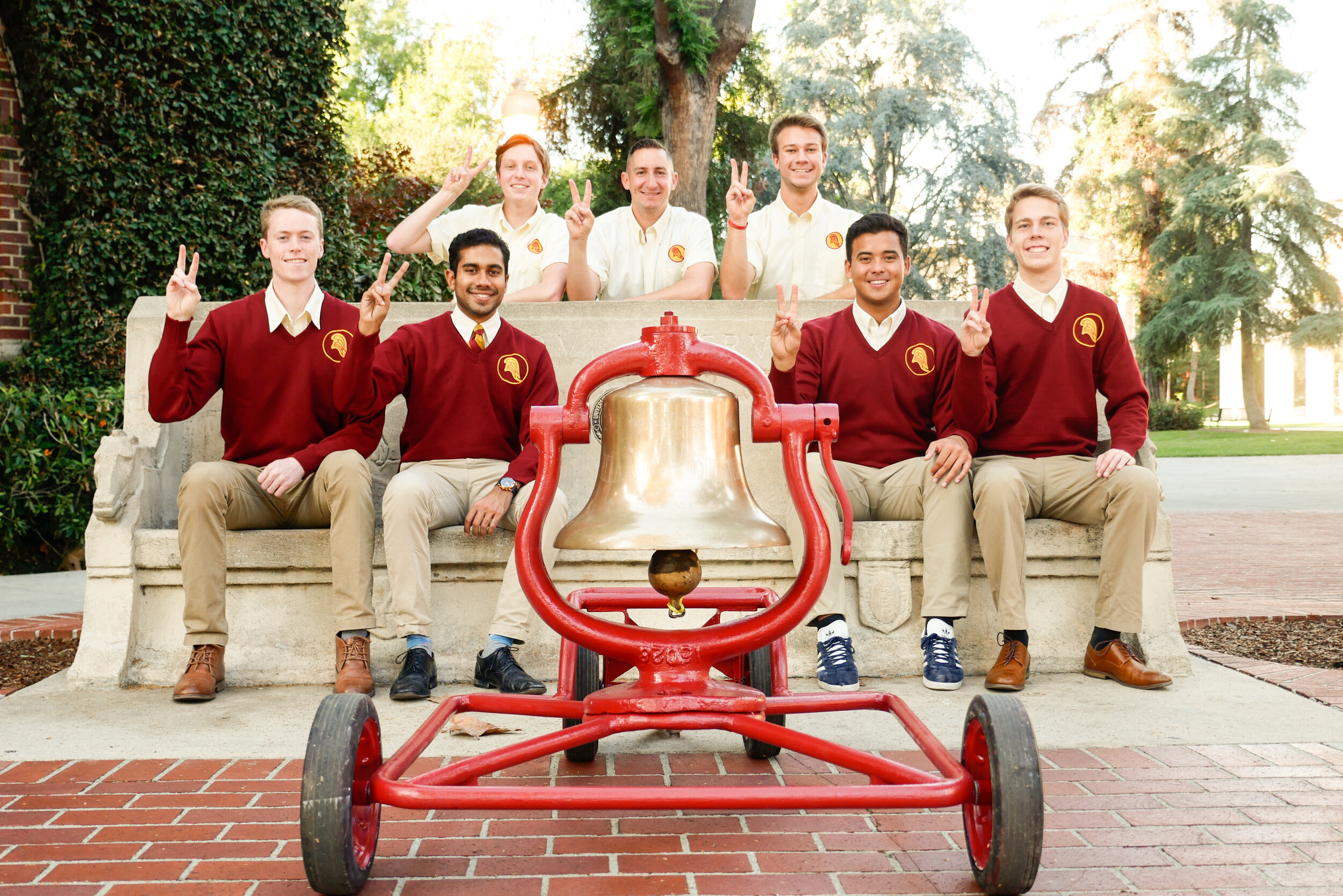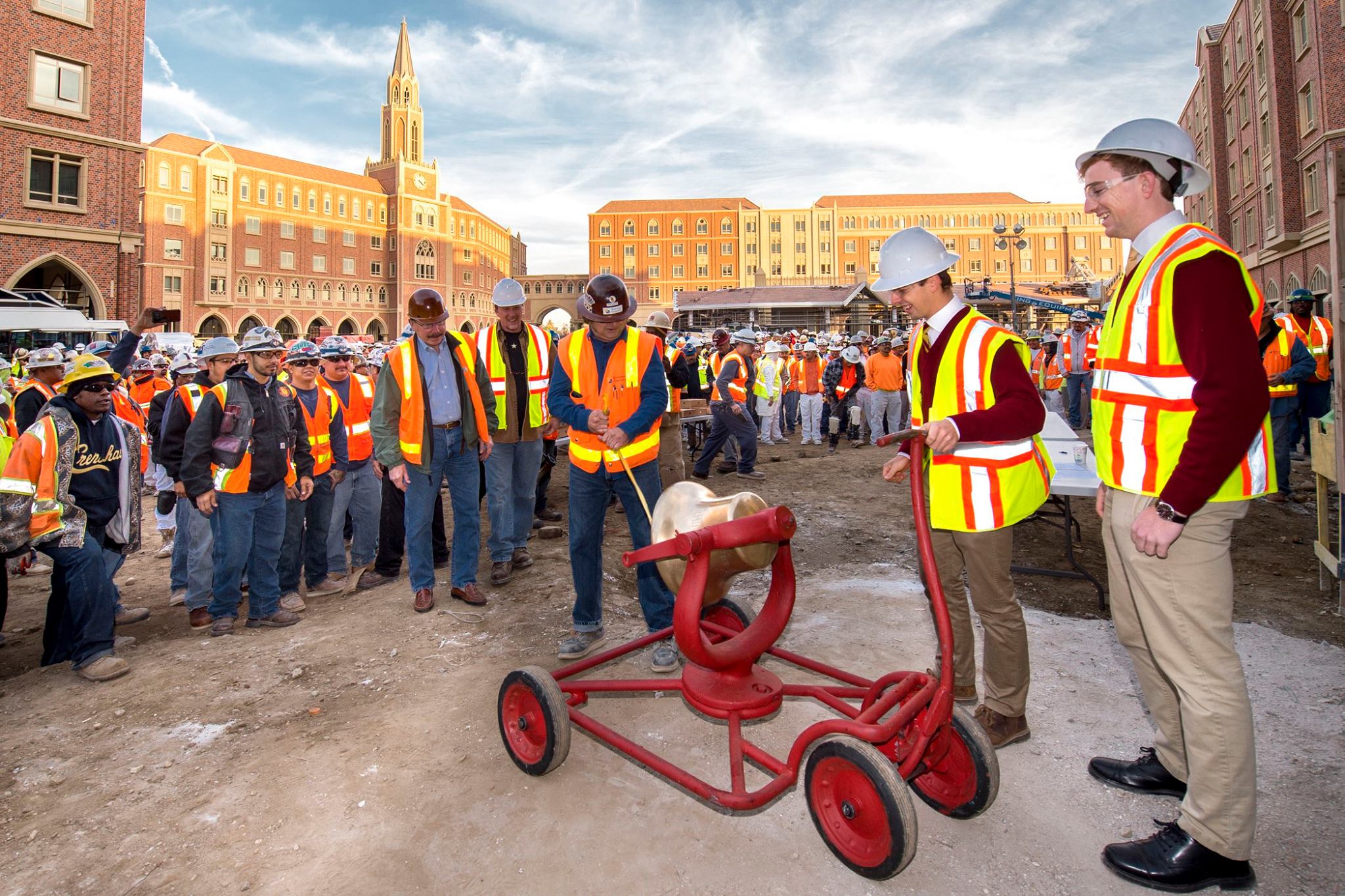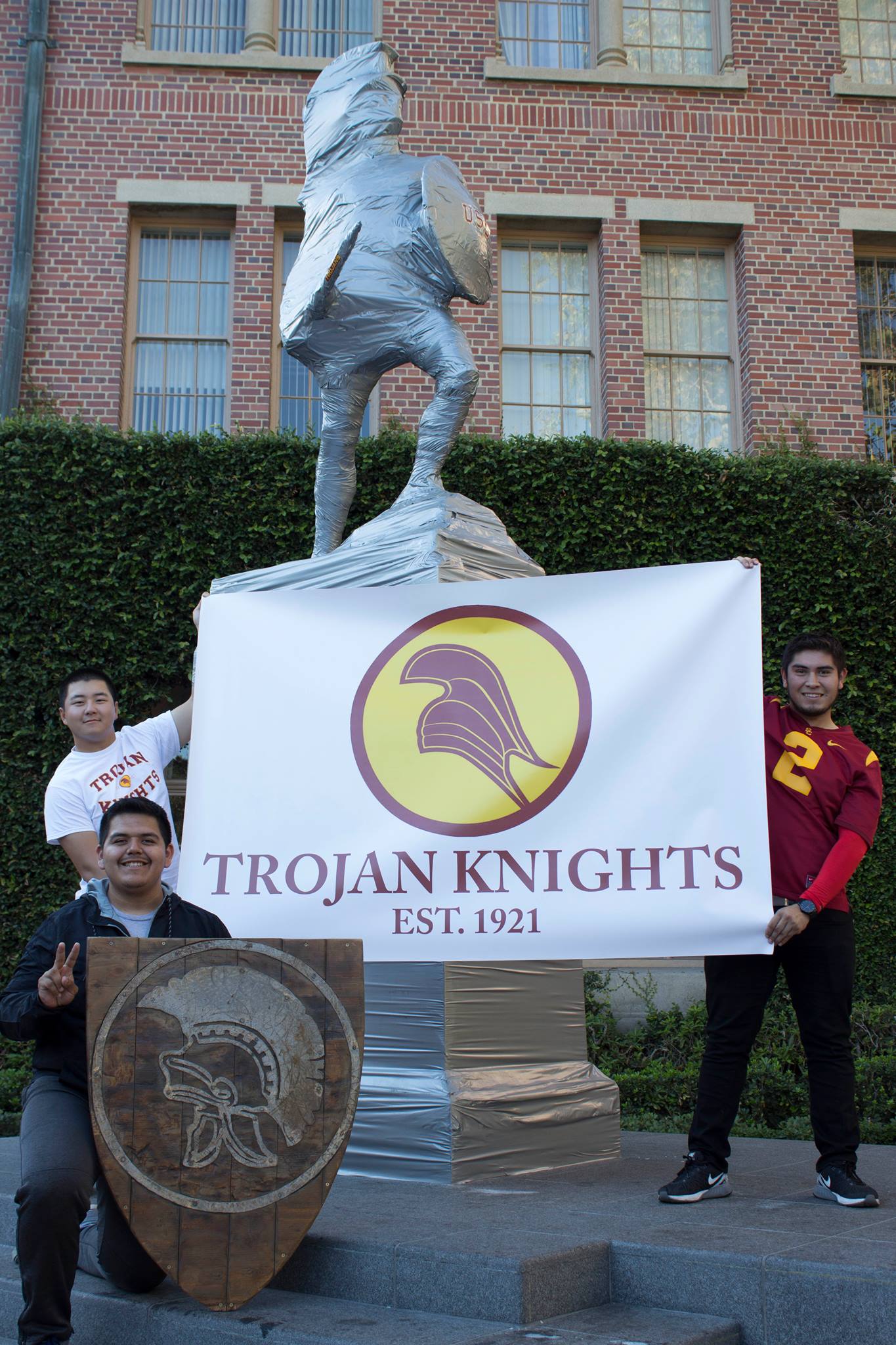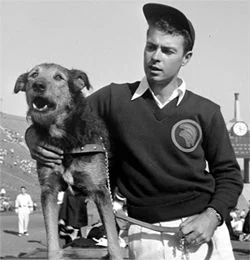Traditions
Founded in 1921 as the University’s official hosts, the Trojan Knights have served USC and its surrounding community with faith and energy, becoming a symbol for school service and spirit. Over the course of almost a century now, the Knights have planned and executed some of the most important events in the history of USC, including Swim with Mike, card stunts, and escorting U.S. presidents. Today, the Trojan Knights are known for being the guardians of the Victory Bell, the protectors of Tommy Trojan during Troy Week, and the rambunctious crowd of body painters in the front row of every home football game.
We consider it an immense honor to attend the University of Southern California and continue to uphold the prestige and reputation of Cardinal and Gold through our organization’s three pillars: brotherhood, philanthropy, and spirit. We ask that all Knights, New Member Candidates and graduating seniors alike, fully embrace USC and all that it stands for.
We treasure USC’s past with our dedicated study of the university’s history. We value USC’s present with our continuous efforts to build spirit within the USC community as well as serve our surrounding community. Lastly, we strive to build a great USC future through upholding some of the university’s greatest traditions, including our very own Trojan Knights.
Read on below to learn the stories of:
Card Stunts
The Victory Bell
Tommy Watch
George Tirebiter
Traveler
The Jeweled Shillelagh
Card Stunts
On October 21st, 1922 the Trojan Knights, under the leadership of Yell Leader Lindley Bothwell, created the first sequential card stunt with a record setting 500 cards. Cal and Stanford had been performing card stunts since the early 1900s, but the Knights created the world’s first moving card stunt at Bovard Field. In the following years, Knights created card stunts by hand on large sheets of graph paper. It was not until the 1960s that a computer program started to be utilized to create each stunt.
While in the USC “rooting section” students were required to wear white shirts in order to be a part of the card stunt. To keep the rooting section orderly and help organize the stunts, Knights were given two seats on the end of every aisle – one for themselves and one for their date. In the early years, only one section was used for the stunt, but over the years we have added another section, doubling our card stunt capacity.
In the late 1980s, card stunts disappeared from USC football games due to safety concerns over the thrown cards after the stunts. A number of attempts were made to bring stunts back in the 1990s and mid-2000s. In 2011 at the USC-UCLA game, card stunts made their triumphant return, with the use of a flexible, plastic card instead of the traditional hard plastic cards. Card stunts can be now be seen at the annual New Student Rally during Welcome Week and at the halftime of certain football games.
The Victory Bell
Since our establishment in 1921, the Trojan Knights have served as USC’s Guardians of Traditions. We take great pride in upholding these traditions inspired by our founders and work today to maintain our heritage, as well as creating a new legacy for our future Knights.
One such honored tradition has been the appearance of the Victory Bell at USC Football games. In 1939, UCLA was given a 295-pound bell from the UCLA Alumni Association. Originally from atop a Southern Pacific freight locomotive, the bell became a common sight at UCLA football games, as the Bruin cheerleaders began to ring it after each Bruin score.
At the beginning of the 1941 football season, 6 Trojan Knights infiltrated the UCLA cheering section and helped the Bruin students load the bell onto a truck bound for Westwood. While the Bruins went to get the key to the truck, they found that the Trojan Knights had removed the key and had driven off with the bell. The bell remained hidden for more than a year, where its location moving all across southern California. At some point, it was even hidden under a haystack.
After photos of the Bell appeared in a local student magazine, UCLA fans retaliated by painting Tommy Trojan, which incited a prank war between the two schools. Shortly thereafter, USC’s President at the time, Dr. Rufus B. von KleinSmid, threatened to cancel the USC-UCLA game if any other incidents happened. This ultimately led to the Victory Bell Accords of 1942.
On November 12, 1942, the student body presidents of both schools, USC’s Bill McKay and UCLA’s Bill Farrer, signed an agreement stating that the annual winner of the rivalry football game would keep possession of the bell for the following year. Since the bell became a rivalry trophy, its carriage has been painted both cardinal and blue several times over the years.
The Victory Bell can be seen every Game Day in the possession of the Trojan Knights. Before the game, the Trojan Knights ring the Victory Bell down Trousdale Boulevard. During games, we ring the Bell on the sidelines after every Trojan score, serving as inspiration to all of the Trojan Family. We also have the privilege of bringing the bell to official University functions and events.
Tommy Watch
As has been the case since the early 1940s when UCLA students decided it would be fun to throw some paint on Tommy Trojan, the Trojan Knights have kept a careful 24/7 vigil during Troy Week, the week leading up to the UCLA game.
Our Knight’s Watch eats, sleeps, and lives at Tommy Trojan for the week, always on the lookout for potential vandals. Knights look forward to spending the nights with Tommy, regardless of the weather, almost as much as the game itself. Nights are filled with great camaraderie amongst members who pass the time with football, and softball match-ups under the watchful gaze of Tommy. Throughout the week, the whole USC community comes out to support us, with the Helenes, Song Girls, Marching Band, football coaches, players, students, alumni, administrators, and more paying us all visits and thanks with food and words of encouragement.
George Tirebiter
In the 1940s, a few Trojan Knights found a little stray dog wandering on Trousdale Parkway. The dog became known as George Tirebiter after he was repeatedly seen biting at the tires of cars driving down the street. George soon became a fan favorite from both the student body and the administration. He even began leading out the Trojan marching band onto the field at football games, where he could be seen wearing little sweaters and hats. During one of the USC-UCLA games in the 1940s, George showed his true loyalty to the university when he bit UCLA’ s mascot Joe Bruin on the nose. Today, George Tirebiter is forever remembered at the South end of Trousdale, looking towards the Coliseum. If you are ever walking to the Coliseum on Gameday, be sure to rub George on the nose.
Traveler
The Trojan Knights were also involved with the introduction of Traveler. In 1954, before Traveler was introduced as the official mascot, Arthur J. Gontier III, a Trojan Knight, rode a white horse at a Trojan football game. Seven years later, in 1961, Traveler became the official mascot of USC. The Trojan Knights have even had one of their own members as a rider of Traveler, when Rick Oas took over the reigns in 1989. Traveler VII can still be seen riding around the Coliseum after the Trojans score a touchdown.
The Jeweled Shillelagh
The USC–Notre Dame rivalry is one of the most historic and celebrated rivalries in all of college sports. Starting in 1926, after the wives of Notre Dame head coach Knute Rockne and USC athletic director Gwynn Wilson convinced their husbands to establish the annual game, the two football programs have both won 11 national championships and both produced 7 Heisman Trophy Winners each.
To commemorate this historic rivalry, the Notre Dame Alumni Club of Los Angeles presented the Shillelagh war club in 1952 as a trophy for the winner of the annual match-up. After its initial presentation, the Club stated, “This shillelagh will serve to symbolize in part the high tradition, the keen rivalry, and above all the sincere respect which these two great universities have for each other.” The foot-long shillelagh, which is a Gaelic war club made of oak and blackthorn samplings from Ireland, is adorned with ruby-encrusted Trojan Heads with the year and game score representing USC victories, while the emerald-studded shamrocks denote Notre Dame victories. While in USC’ s possession, the shillelagh is housed in the historic Heritage Hall, along with the many other trophies from USC athletics.
The original shillelagh was retired after the 1989 game, when the war club could no longer hold any more medallions. A new shillelagh was then created and commissioned by Jim Gillis, a former baseball player at both USC and Notre Dame. This version, which was modified in 1997 in County Leitrum, Ireland, contains the medallions dating back to the 1990 game and can be seen in Heritage Hall today.



